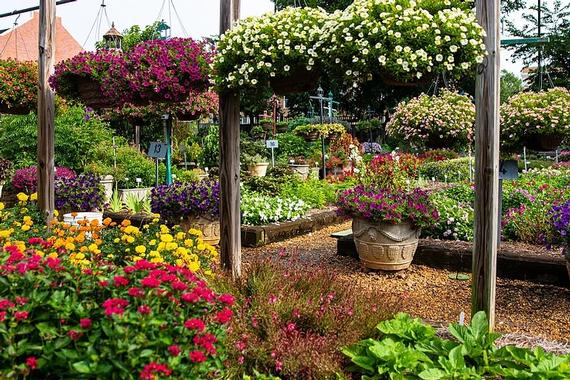Welcome to the University of Georgia Trial Gardens
Who we are...
Who we are
The Gardens at Athens started in 1982 when Allan Armitage and Michael Dirr, along with some students, plowed some ground and built a wobbly lathe area. PanAmerican Seed company was the first believer, and with a bunch of PanAm Seed and a few dollars, the gardens were born. Dr. John Ruter took over as Director of the Trial Gardens in 2013. Today, we receive plants or seeds from many plant breeding companies worldwide, material from perennial plant nurseries, individual growers and gardeners, and selections from Dr. Ruter’s breeding program.
The primary functions of the garden have always been research, teaching, and introduction of new crops, which continues today. Sandy Begani manages the daily operation of the Trial Gardens with the help of student workers, interns, and numerous volunteers. The garden is open to the public and professionals alike, and detailed information on the plants we trial is available to all interested by visiting Garden Trials or our website.
The trials are planted in April and May and consist of major and minor bedding classes, tropicals, vines, plantings of specialty annuals, over 150 free-standing containers and three large perennial beds.
The other major function of the garden is the evaluation and subsequent introduction of new crops for the greenhouse and landscape industries. We have two different methods of plant introduction. Breeding efforts have provided plants such as Aruncus 'Misty Lace' however most new introductions are the result of improvements to selections of plants found through travel (Tibouchina 'Athens Blue', New Zealand; Lantana 'Athens Rose', Australia), sent by gardeners (Ipomoea 'Margarita'; Cleome 'Linde Armstrong'; Alternanthera 'Gail's Choice'), through selection of existing genera (Verbena 'Homestead Purple'; Cuphea 'Susan's Little Gem'; Ruellia 'Ragin' Cajun').
A protocol for the introduction of new crops has been developed which includes tolerance to heat and humidity, ease of propagation, resistance to disease and insects, greenhouse production time, and cutting efficiency. Essentially, this protocol allows us to cull many plants from the program, so that only the best remain. If plants "make the cut," they are distributed nationally. In the past, many plants were simply introduced to growers who wished to produce them, including annuals and perennials. This method of introduction continues today.
Contact Us
